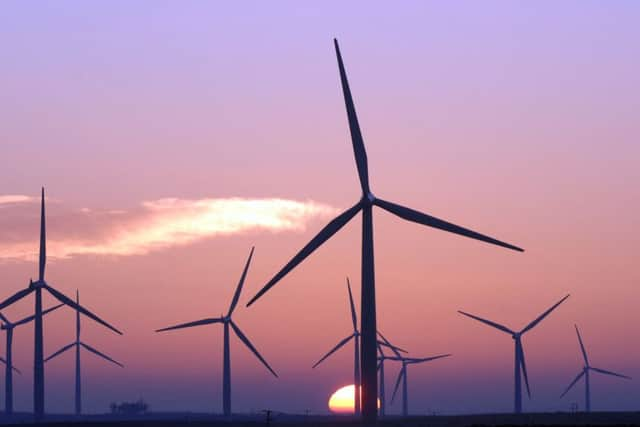Renew the big push on renewables


At the time many said the findings of the independent research carried out for the Power of Scotland report was pie in the sky. But fast forward ten years and we’re already well on the way to meeting this goal, with 57 per cent of our electricity coming from renewables in 2015, and more projects due to come online.
With government backing and strong public support, the growth in cleaner, low carbon power is proving that Scotland can lead the low carbon revolution.
Advertisement
Hide AdAdvertisement
Hide AdThis transformation in how Scotland’s electricity is produced is reducing our climate-damaging emissions, helping us hit our annual climate target for the first time. But if we’re to keep up Scotland’s leadership in tackling climate change, we’ll need to turn our attention to the other ways we use energy, namely heat and transport.


Last month, along with RSPB Scotland and Friends of the Earth Scotland, we released new research exploring what transformations we need to see to meet Scotland’s climate targets by 2030. Energy consultants Ricardo Energy & Environment used, for the first time, a full model of Scotland’s energy system that considers all areas including electricity, buildings and transport.
“The Energy of Scotland”report sets out how we can transform the way we heat, move and power our lives from now to 2030, to reduce our emissions, hit climate targets and capture many other benefits. So how do we get there? We’ll need to increase renewable output from 13 per cent today, to 50 per cent by 2030 – that’s not just electricity, but all energy.
In transport we’ll need to see a big shift away from petrol and diesel to electric vehicles (EVs). It sounds a tough ask, but costs are falling and the number of EVs on the world’s roads has doubled in the last two years alone. With our excellent renewable electricity resources, it’s possible for 20 per cent of our transport sector to run on renewables by 2030, which would see a massive improvement in air quality, especially in cities.
Turning to our homes and buildings, these will need to become much more efficient. It’s a no-brainer: investing once to improve a home’s insulation will repay in lower energy bills and lower climate emissions for decades to come. The health of the nation would be improved by ending the scourge of cold, damp, unhealthy homes, and new jobs would be created across Scotland in the process.


More efficient technologies, such as electric heat pumps and district heat networks, which carry heat to homes from large power stations via pipes in the ground, will replace oil and gas boilers. Other countries are already leading the way – Copenhagen is almost entirely heated by district heat networks, which are increasingly using low-carbon sources of heat. And heat pumps are already installed in tens of thousands of homes in France and Germany every year.
In the electricity sector more renewable capacity will be needed to meet that increased demand from the heat and transport sectors, but with Scotland playing to its strengths we can do this and export surplus generation to our neighbours.
And the lights will stay on, thanks to investment in energy storage, interconnection to our neighbours and more responsive demand enabled by smart meters, with no need for new fossil fuel generation in Scotland.
Advertisement
Hide AdAdvertisement
Hide AdThe conclusions of the research are clear: sourcing 50 per cent of our energy from renewables by 2030 is not only achievable, but essential if we’re to meet our climate targets in a cost effective way.
Not only will investing in this future be good for the environment, it will lift thousands of the most vulnerable in our society out of fuel poverty, improve the air that we all breathe, free up NHS cash for other uses and create thousands of new jobs across the whole country. That’s certainly the kind of Scotland I would like to live in.
The Scottish Government has a big role to play to make this happen, which is why our organisations are calling on it to set a new target in its forthcoming energy strategy to source at least 50 per cent of Scotland’s energy from renewables by 2030.
This would extend the same kind of leadership Scotland has shown in the electricity sector to these new areas, sending a clear signal to consumers and businesses about the changes, and benefits, to come.
Fabrice Leveque, Climate and Energy Policy Officer at WWF Scotland